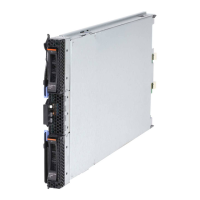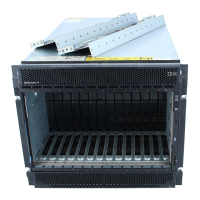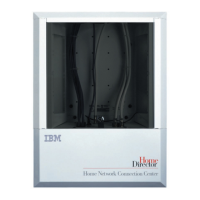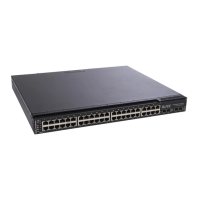Trunking can be set as a static port/group using the Port Trunking window or as a
dynamic port/group using the IEEE 802.3ad Link Aggregation window.
To configure a port trunking group, highlight Link Aggregation on the main menu
and press Enter.
Link aggregation, or port trunking, enables several ports to be grouped together and
to act as a single link. This gives a bandwidth that is a multiple of a single-link
bandwidth.
Port trunking is most commonly used to link a bandwidth intensive network device
or devices, such as a server, to the backbone of a network.
The switch module offers link aggregation on four external ports for up to two static
trunk groups or two LACP 802.3ad link aggregation groups. The trunked ports can
be non-continuous (that is, have non-sequential port numbers). All of the ports in
the group must be members of the same VLAN. In addition, the trunked ports must
all have the same speed and be configured as full duplex.
The configuration of the lowest numbered port in the group becomes the
configuration for all of the ports in the port trunking group. This port is called the
Master Port of the group, and all configuration options, including the VLAN
configuration, that can be applied to the Master Port are applied to the entire port
trunking group.
Load balancing is automatically applied to the ports in the trunked group, and a link
failure within the group causes the network traffic to be directed to the remaining
links in the group.
The STP will treat a port trunking group as a single link, on the switch level. On the
port level, the STP will use the port parameters of the Master Port in the calculation
of port cost and in determining the state of the port trunking group. If two redundant
port trunking groups are configured on the switch, STP will block one entire group,
in the same way that STP will block a single port that has a redundant link.
Use the Link Aggregation menu to set the distribution method for both IP packets
and non-IP packets and then click APPLY to make your change effective.
The information on the preceding window includes:
Distribution Method
The switch module permits different load sharing methods when ports are
trunked together. In some environments, a different method can improve
Chapter 6. Configuring the switch module through the Telnet interface 111
